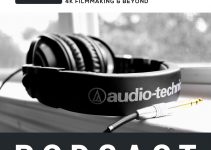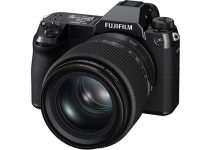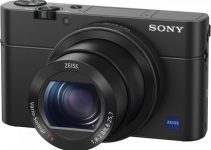At the dawn of 2020, there’s a trend that is getting widely popular. It has been in the works for quite a while, but now we can clearly see that camera makers are thriving to push the market towards the full-frame segment. It could be to charge more, after all, a bigger sensor means bigger manufacturing cost and higher profit margins, right?
It could be the opposite, though. Since a lot of customers are taking the full-frame route, offering some more options down there could lead to better profits. Be as it may, there are a lot of full-frame, quite affordable cameras on the market right now among which the Panasonic S1H and Sony A7III seem to be two of the most compelling choices for the average indie filmmaker. The Everyday Dad has the rivals battling one against the other in the video below to determine the best between the two.
Right off the bat, the main difference between the two cameras appears to be the size. The S1H is after all a compact cinema camera, while the A7III is a full-frame mirrorless more akin to its DSLR ancestry. Spec-wise they both have full-frame sensors (24 MP each) but Panasonic has many more options in terms of frame size (it shoots 6K!), codecs, and frame rates too.
Meanwhile, Sony has a better autofocus system (it will even track animal eyes in still mode!) if compared to Panasonic’s depth-from-defocus. It’s true, the S1H is still much better than the competition, but inferior to Sony.
Panasonic’s flagship offering, however, has much to offer in terms of codecs. The V-Log footage we get straight out of the camera is with incredible quality, and it’s even extremely easy to grade.
That’s not to say that Sony is not up to par, after all, it has become the industry leader thanks to the quality of its cameras, but even if incredibly well-tuned, Sony’s S-log files cannot compete with Panasonic’s V-Log L. At least they are not so easy to grade for inexperienced filmmakers.
But picture quality is only part of the game: audio quality is extremely important as well. Both cameras have 3.5 mm jack input with an internal preamp. They both can hook almost any kind of basic microphone, plus they both provide support for a complementary accessory to boost their audio game. Panasonic’s one is called the DMW-XLR1.
This small device slides in the hot shoe of the camera and can accept XLR inputs, upping considerably the audio capabilities of the camera. Sony is offering a small add-on that has almost the same functions, it only lacks a cold shoe on top to mount other pieces of gear.
Panasonic leads the race also when it comes to the overall usability of the camera, and the rear LCD touchscreen is a big part of it. It’s amazing since it can tilt and rotate in any direction.
Furthermore, the bigger body allows for a better grip, and all the buttons are programmable. The A7 III, on the other hand, has a flip screen but is not as good as the one found on the S1H as the general usability does not feel so good.
So then, is Panasonic the clear winner of the contest? Well, the answer is not so easy. The bigger body can become cumbersome at times, making the lighter A7 III easier to carry around, but there’s a key aspect where the Sony’s offering is superior right now, and that’s the lens mount.
Sony, in fact, uses the classic E-Mount, as opposed to the Leica L on the S1H. The latter has a lot of positive feedback, but it’s still so new that there aren’t many lens choices available and surely almost nothing cheap or used. But the goods of the Sony E-Mount go beyond the cheap lens availability.
Another big advantage of this system is Sony’s choice of keeping it across the whole line up from the A6400 to the FS7. All these cameras have the same mount system which makes moving from one camera to the other seamlessly. That is a great move by Sony, and, incredibly, a customer-oriented one.
Drawing our conclusions, which of this camera is the best? Apparently, these are two different camera systems overall, with different target users in mind.
The S1H is aimed at a more cinematic crowd, the kind that works in bigger projects and shoots low-cost shorts or shows, while the A7 III seems to be the better choice for the one-man-band independent filmmaker and run-and-gun online creator. So, keep that in mind before making your buying decision. You could also share your thoughts on the topic in the comments below.
[source: The Everyday Dad]
Order Links:
Panasonic Lumix DC-S1H Mirrorless Digital Camera (B&H, Amazon)
Sony Alpha a7 III Mirrorless Digital Camera (B&H, Amazon)
Disclaimer: As an Amazon Associate partner and participant in B&H and Adorama Affiliate programmes, we earn a small comission from each purchase made through the affiliate links listed above at no additional cost to you.




